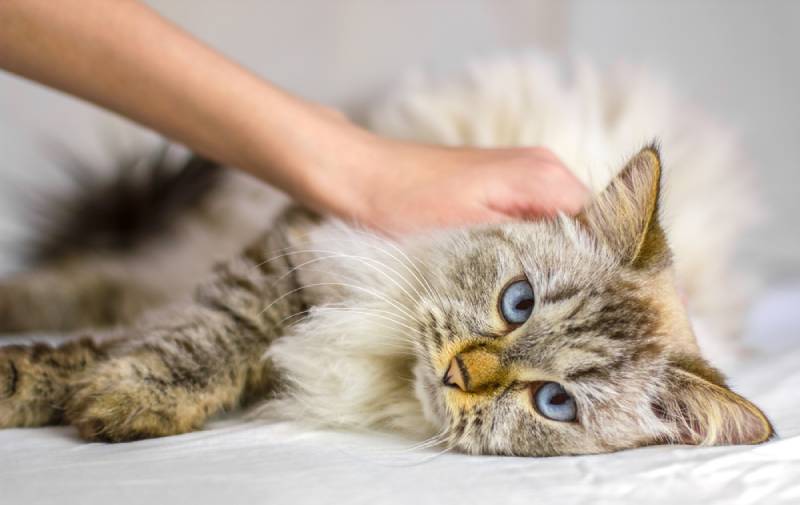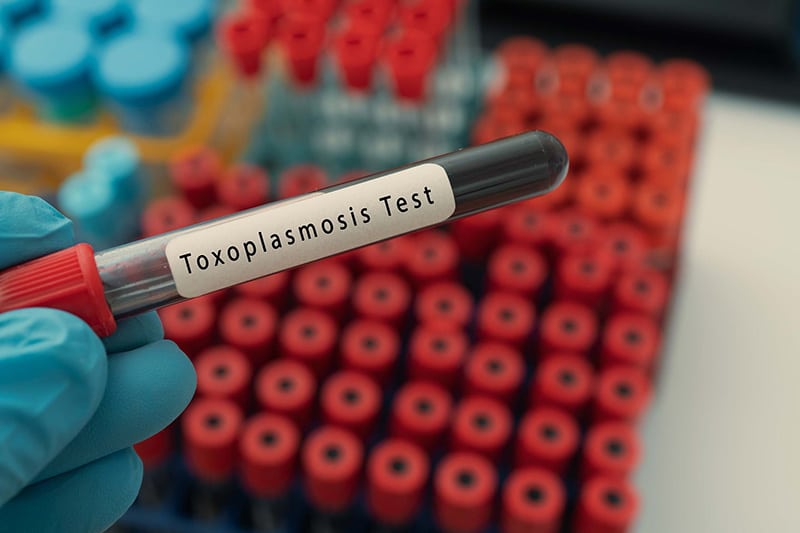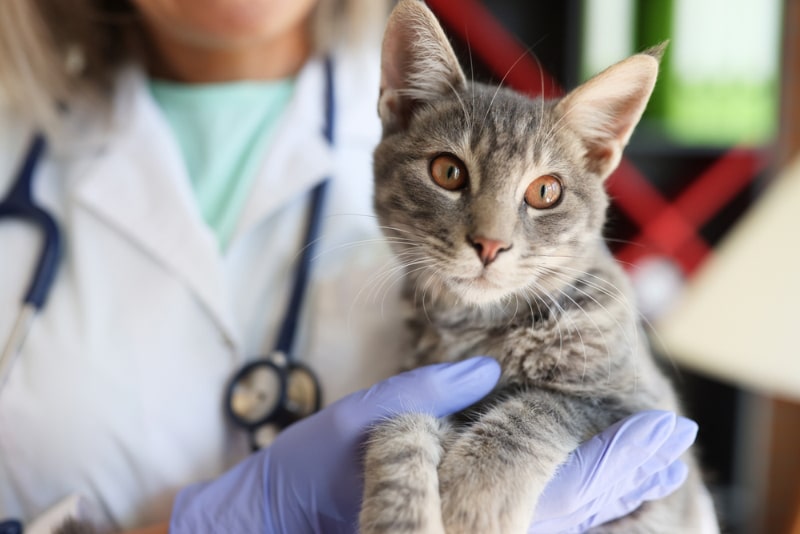Toxoplasmosis is a disease that affects cats that can be picked up from the environment. Toxoplasmosis is commonly discussed in households because of the risk it poses to pregnant women. But what exactly is toxoplasmosis, and how does it affect cats? Continue reading below to learn more about this pathogen.


What is Toxoplasmosis?
Toxoplasmosis is a disease caused by a single-cell protozoan parasite, Toxoplasma gondii. Cats become infected with toxoplasma when the infected stage is ingested, usually through consumption of an intermediate host or accidental consumption of fecal matter.
Toxoplasma gondii has only one definitive host: the cat. A definitive host is a host in which the parasite reproduces and produces eggs. However, this protozoan can infect most warm-blooded animals, including humans. An intermediate host is an animal in which the parasite can reproduce in a cyst form, but the parasite cannot complete its life cycle. A cat is infected Toxoplasma gondii when an intermediate host living in a cyst is digested or when an oocyst from the environment is ingested.
Definite Host
When the cystic stage or infective oocyst is ingested by a cat, the protozoan is released into the gastrointestinal tract where it begins to form eggs, called oocysts. Oocysts are deposited in the environment through defecation.
Alternatively, some Toxoplasma gondii The protozoans leave the gastrointestinal tract and encyst in other tissue, usually muscle or brain.
Intermediate Host
Other animals can become infected Toxoplasma gondii when the oocysts are digested, or if the meat containing the cyst is digested. Once ingested by the intermediate host, the protozoan escapes the oocyst and invades other cells, eventually forming a cyst. Here, the parasite waits to be eaten by a cat to complete its life cycle.



What Are the Signs of Toxoplasmosis in Cats?
Cats infected with Toxoplasma gondii may not show signs, as their immune system is effective at limiting the parasite. Unfortunately, cats with compromised immune systems are more likely to develop clinical signs associated with toxoplasmosis. Examples include cats that are very young, are FIV positive, or have feline leukemia.
Possible signs of toxoplasmosis include:
- Fever
- Dizziness
- Seizures or other neurologic abnormalities, including head pressing, dizziness, and visual impairment
- Jaundice (if the protozoan reaches live)
- Pneumonia (if the protozoan reaches the lungs)
Diagnosis and Treatment of Toxoplasmosis in Cats
Toxoplasmosis is usually diagnosed through history and laboratory tests that check antibody levels. Toxoplasma gondii. In other situations, infection can be diagnosed by examining tissue or spinal fluid.
Fortunately, toxoplasmosis is treated with antibiotics. Clindamycin is usually given for 2-4 weeks to affected cats.

How to Care for a Cat With Toxoplasmosis
If your cat has been diagnosed with toxoplasmosis, it is important to carefully follow the instructions given to you by your veterinarian.
The litter box should be cleaned as soon as possible after defecating, and the excrement should be properly disposed of. Fresh feces contaminated with Toxoplasma gondii is not infectious for at least 24 hours after it is placed in the environment, because the oocyst needs time to mature.
Ensure that any immunocompromised cats are kept indoors to limit their exposure to infectious agents in their environment.
Zoonotic potential
Zoonotic diseases are diseases that can be transmitted from animals to humans. Toxoplasmosis is zoonotic and can cause abortion in pregnant women. Women infected with Toxoplasma gondii can go on to pass the infection to their child in utero, which can lead to blindness or developmental delays. Females who are pregnant or may become pregnant should be careful when cleaning the litter box, or better yet, should avoid that responsibility.
Usually, people infected with Toxoplasma gondii do not experience clinical signs. Individuals who are immunocompromised are more likely to have clinical signs of illness from toxoplasmosis. Signs of infection can include flu-like symptoms, seizures, and confusion.
Care should be taken to thoroughly wash your hands before preparing or eating food. Make sure the meat is not consumed raw. Additionally, because oocysts can survive in the environment for long periods of time, gloves should be used when gardening.



Frequently Asked Questions
Can My Cat Pass Toxoplasmosis to My Dog?
Yes, your cat can pass Toxoplasma gondii to your dog if your dog eats infected feces. Often, healthy dogs do not show clinical signs of infection; however, immunocompromised individuals may experience fever, seizures, and possibly death.
My Cat Was Diagnosed With Toxoplasmosis. What Are Their Warnings?
The general prognosis varies depending on the organs affected by the infection. Most infected cats remain asymptomatic. If the infection affects the liver or lungs, the prognosis is less favorable. Response to treatment also tells about prognosis.


Conclusion
Toxoplasmosis is a disease caused by Toxoplasma gondii. Although these protozoan infections can cause serious signs, such as seizures, the definitive and intermediate host usually experience no clinical signs. Immunocompromised hosts are more likely to develop signs of illness. However, with appropriate treatment, recovery is possible depending on the organ involved.
Zoonotic potential exists, so care must be taken by people cleaning the litter box, and all meat must be fully cooked before eating. If you suspect that your cat has signs related to an infection in Toxoplasma gondiiyou should schedule an appointment with your veterinarian.
Featured Image Credit: 4 PM production, Shutterstock



